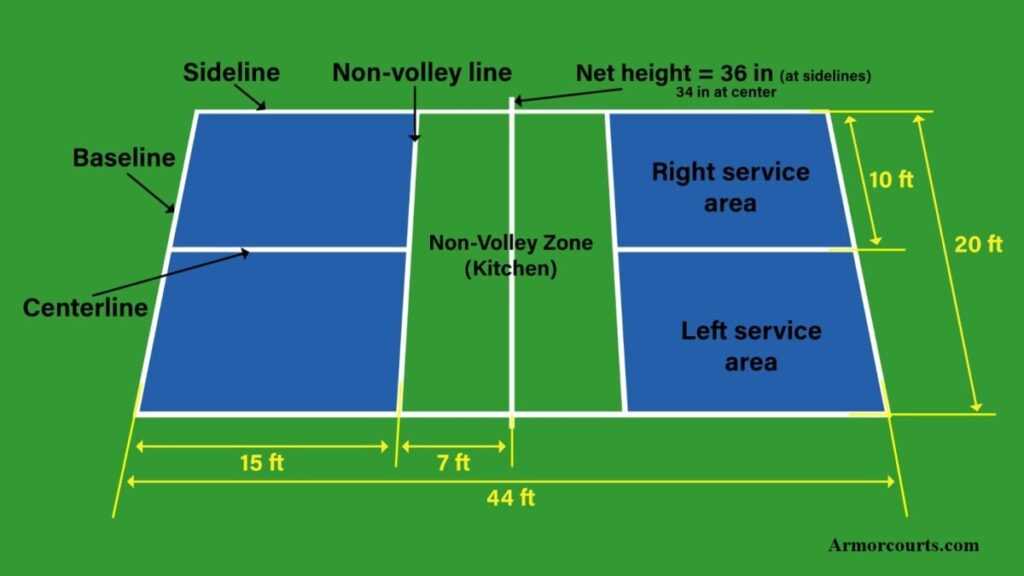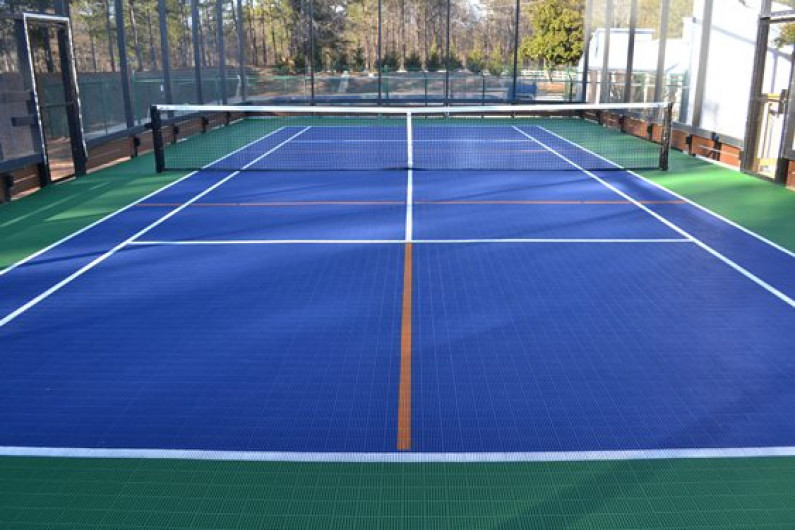High-Quality Pickleball Court Construction for Every Level of Play
High-Quality Pickleball Court Construction for Every Level of Play
Blog Article
Lasting Practices in Pickleball Court Building You Should Know
As the appeal of pickleball continues to increase, so also does the need for sustainable techniques in court construction. The effect of these techniques extends far past the court itself.
Picking Eco-Friendly Products
Choosing environment-friendly products is an essential step in the building and construction of lasting pickleball courts. The selection of lasting materials not only minimizes environmental influence but likewise boosts the longevity and efficiency of the court. Key materials include recycled rubber for the surface, which provides outstanding longevity and shock absorption while drawing away waste from garbage dumps.
In addition, using locally sourced materials decreases transportation exhausts and sustains local economic climates. Pickleball court construction. Using native woods for fencing and seats can supply a sustainable visual while making certain durability versus the elements.
Integrating permeable products for court foundations can further add to sustainability by enabling for natural water drainage and lowering overflow. These choices not just secure neighborhood ecological communities but additionally promote much healthier play atmospheres.
Reliable Drain Solutions
While the option of green materials is essential, applying effective drain services is just as crucial for keeping lasting pickleball courts. Proper drainage not only secures the court surface area from water damages however likewise lessens disintegration and runoff, promoting environmental stability.
Efficient drainage systems can include permeable paving, which permits water to infiltrate the ground instead than pooling on the surface area. This minimizes the probability of standing water, which can cause mold and mildew and various other maintenance issues. Additionally, incorporating tactically put drainage networks and swales can guide excess water away from the court area, making sure a dry having fun surface area and stopping soil disintegration.
Making use of native vegetation in the landscape design around the courts can better improve drainage by absorbing excess water and lowering runoff. These plants call for less irrigation and advertise biodiversity, lining up with sustainable practices.
Moreover, it is critical to regularly preserve the water drainage system to ensure its long-term effectiveness. This consists of cleaning particles and tracking for clogs. By prioritizing reliable drain solutions, pickleball court manufacturers can substantially add to the sustainability and long life of the center, eventually profiting both players and the atmosphere.
Energy-Efficient Lights Options
As the demand for pickleball remains to expand, incorporating energy-efficient lights choices right into court design has come to be significantly important for sustainability. Conventional lights systems often consume extreme energy, contributing to greater functional expenses and environmental influence. Embracing contemporary, energy-efficient modern technologies is necessary for both new buildings and restorations.
LED (Light Emitting Diode) illumination stands apart as a premier selection because of its durability and energy cost savings (Pickleball court construction). Contrasted to standard illumination, LEDs utilize around 75% less energy and can last up to 25 times much longer, considerably decreasing maintenance expenses. Additionally, the directional nature of LED lights lessens light pollution, guaranteeing that lighting is focused on the court rather than bordering areas.

Lasting Surface Area Alternatives
Checking out lasting surface choices for pickleball courts has actually gained traction amongst players and building contractors alike. The focus on eco-friendly materials not just straightens with the expanding ecological recognition but also improves the performance and sturdiness of the courts.
This material provides exceptional shock absorption, decreasing the risk of injuries for gamers while promoting sustainability. These floor tiles are easy to mount and replace, and their versatility enables for various court setups.
Natural yard courts are also becoming a sustainable her response selection, promoting biodiversity and decreasing the warm island result. However, they need routine upkeep and water, which might not straighten with all sustainability objectives.

Water Conservation Techniques

An additional efficient method involves the installation of rain harvesting systems. These systems store and accumulate rainwater for use in keeping court surfaces and landscape design. This approach not only preserves drinkable water yet also minimizes dependence on metropolitan sources.
Additionally, using drought-resistant landscaping around the courts is crucial. Native plants need much less water and are much better adjusted to local climate conditions, therefore lowering total water consumption. Furthermore, making use of efficient irrigation systems, such as drip irrigation, makes sure that water is provided straight to plant roots, reducing evaporation and waste.
Final Thought
Integrating lasting practices in pickleball court construction substantially adds to environmental conservation and resource effectiveness. By focusing on these practices, the building and construction of pickleball courts can align with more comprehensive environmental goals while advertising long life and performance within areas.
As the popularity of pickleball continues to increase, so also does the need for sustainable methods in court building.Picking eco-friendly materials is a crucial step in the building of sustainable pickleball courts. By prioritizing energy-efficient illumination choices, pickleball court fitters can add to a much more sustainable future while meeting image source the needs of gamers and stakeholders alike.Integrating sustainable surface alternatives not only enhances the efficiency of pickleball courts yet additionally leads the way for executing efficient water conservation methods.Integrating lasting methods in pickleball court building considerably adds to environmental conservation and resource performance.
Report this page